Abstract
1. We have investigated the in vitro cardiac actions of flosequinan and of its major metabolite in man, BTS 53554. 2. Positive inotropic activity was seen with flosequinan in guinea-pig isolated ventricles, the threshold concentration for effect being less than 1 x 10(-5) M. BTS 53554 was approximately half as potent as the parent compound. 3. In guinea-pig working whole hearts flosequinan increased left ventricular dp/dtmax, indicating a positive inotropic action. This effect was accompanied by increases in heart rate, cardiac output and stroke volume. 4. The virtual complete inhibition of inotropic responses to flosequinan and BTS 53554 by carbachol suggests that these responses are adenosine 3':5'-cyclic monophosphate (cyclic AMP)-mediated. 5. Flosequinan was shown to increase calcium inward current in guinea-pig ventricle, an action consistent with a cyclic AMP involvement in the response. 6. The inotropic activity of flosequinan was not potentiated by the selective phosphodiesterase (PDE) III inhibitor SK&F 94120, a result which indicates that flosequinan does not increase cyclic AMP concentrations via stimulation of adenylate cyclase. 7. Flosequinan inotropic responses were potentiated by rolipram, a selective PDE IV inhibitor, a result consistent with flosequinan being itself a PDE III inhibitor. 8. Biochemical studies with purified enzymes confirmed that flosequinan and BTS 53554 are relatively selective inhibitors of PDE III. 9. A comparison of pharmacological and biochemical data for both flosequinan and BTS 53554 indicates that their PDE III inhibitory potency is sufficient to account for their inotropic activity.
Full text
PDF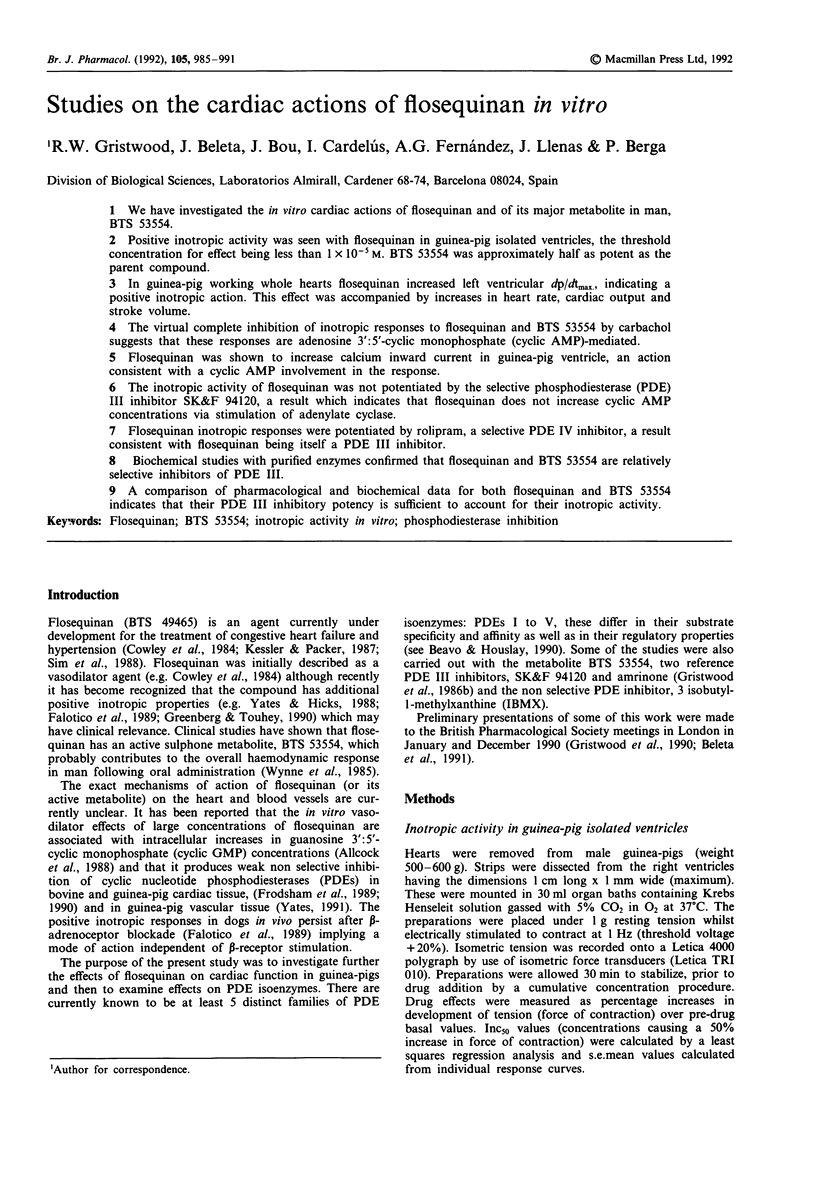
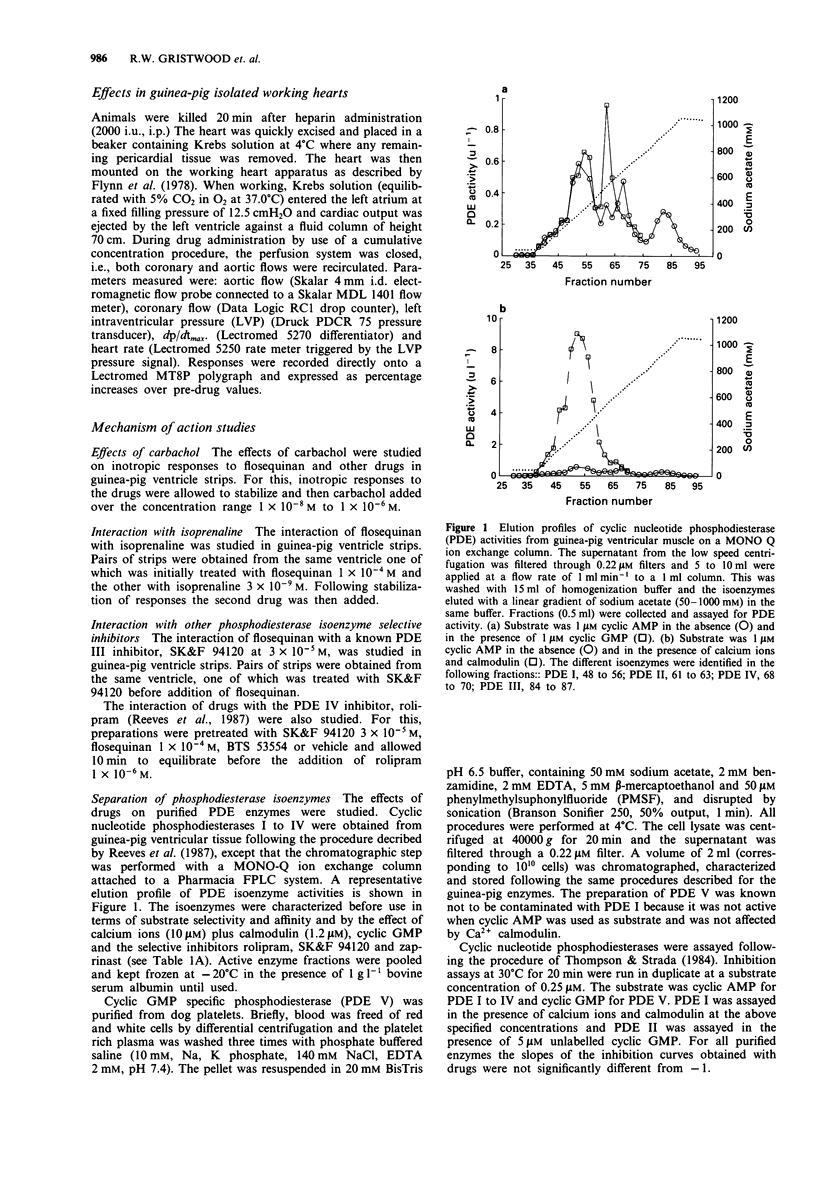
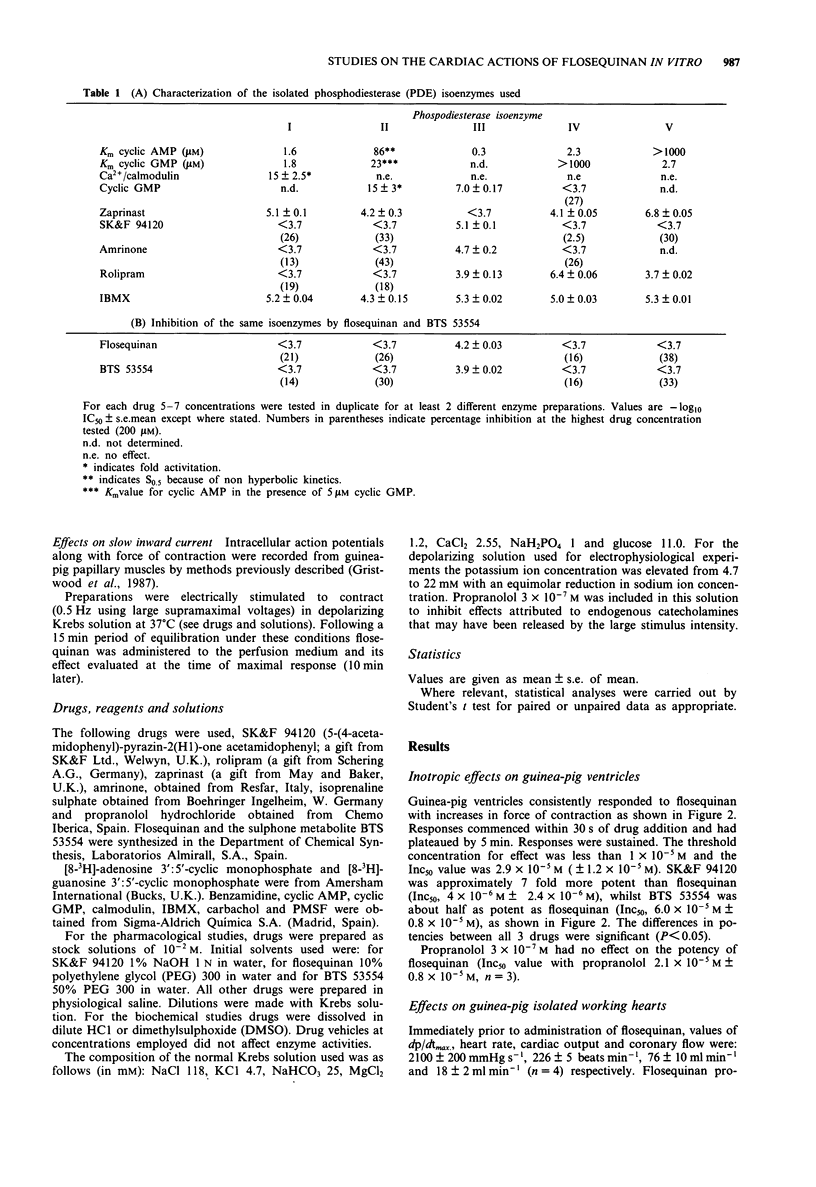
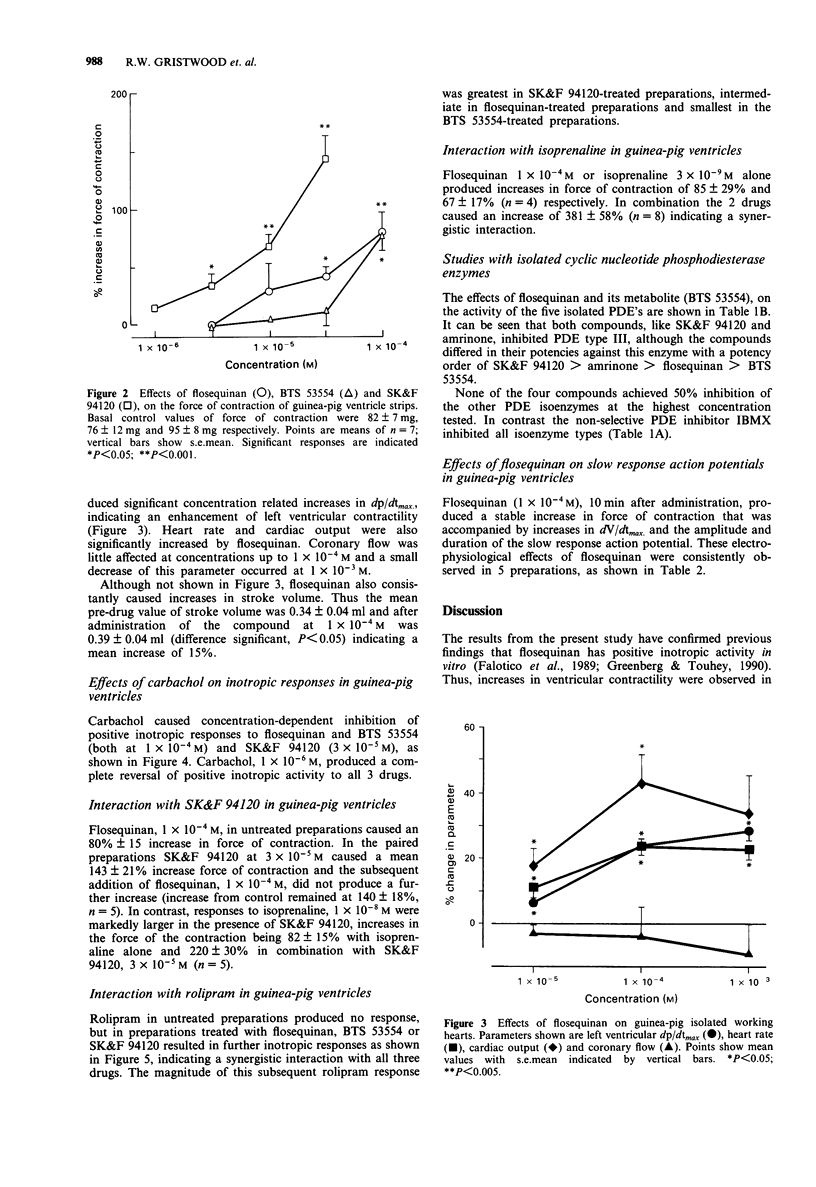
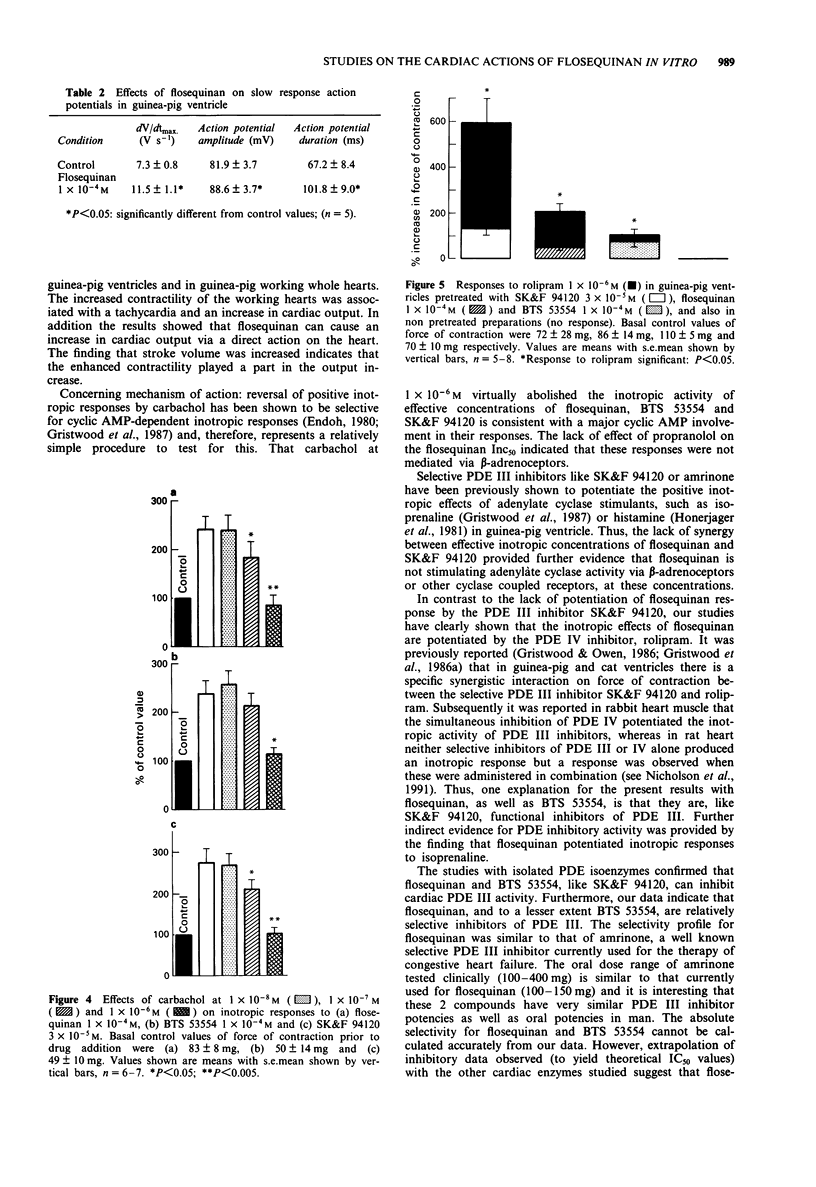
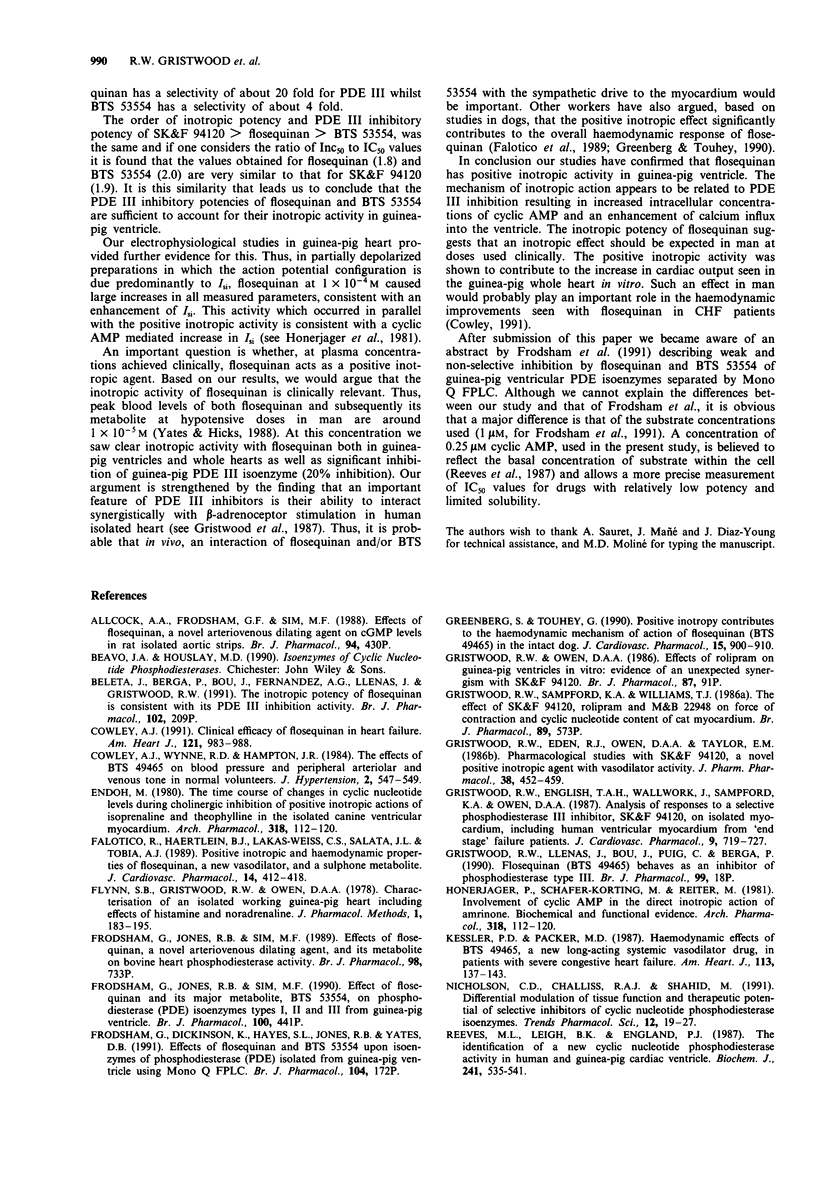
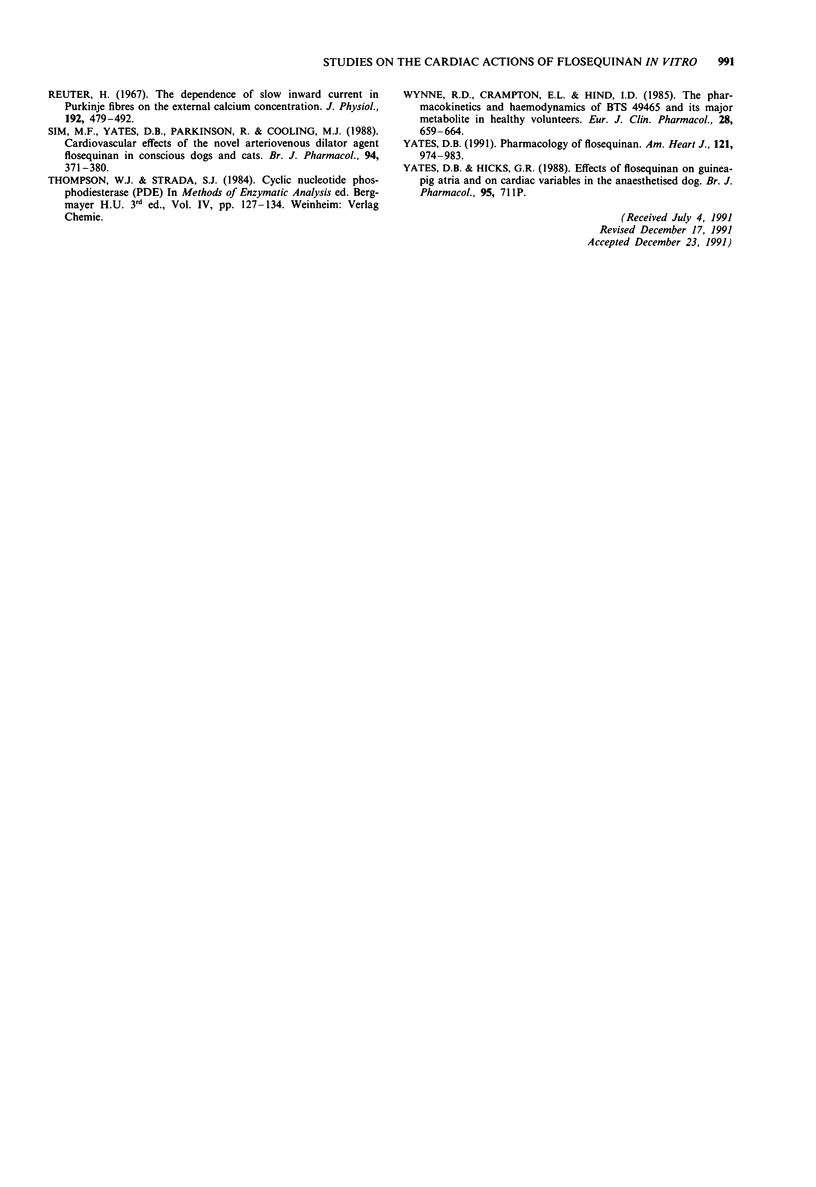
Selected References
These references are in PubMed. This may not be the complete list of references from this article.
- Arimura H., Ikemoto Y. Action of enflurane on cholinergic transmission in identified Aplysia neurones. Br J Pharmacol. 1986 Nov;89(3):573–582. doi: 10.1111/j.1476-5381.1986.tb11158.x. [DOI] [PMC free article] [PubMed] [Google Scholar]
- Cowley A. J. Clinical efficacy of flosequinan in heart failure. Am Heart J. 1991 Mar;121(3 Pt 1):983–988. doi: 10.1016/0002-8703(91)90230-f. [DOI] [PubMed] [Google Scholar]
- Falotico R., Haertlein B. J., Lakas-Weiss C. S., Salata J. J., Tobia A. J. Positive inotropic and hemodynamic properties of flosequinan, a new vasodilator, and a sulfone metabolite. J Cardiovasc Pharmacol. 1989 Sep;14(3):412–418. doi: 10.1097/00005344-198909000-00009. [DOI] [PubMed] [Google Scholar]
- Fann M. L., Souccar C., Lapa A. J. Phenthonium, a quaternary derivative of (-)-hyoscyamine, enhances the spontaneous release of acetylcholine at rat motor nerve terminals. Br J Pharmacol. 1990 Jul;100(3):441–446. doi: 10.1111/j.1476-5381.1990.tb15825.x. [DOI] [PMC free article] [PubMed] [Google Scholar]
- Greenberg S., Touhey B. Positive inotropy contributes to the hemodynamic mechanism of action of flosequinan (BTS 49465) in the intact dog. J Cardiovasc Pharmacol. 1990 Jun;15(6):900–910. doi: 10.1097/00005344-199006000-00007. [DOI] [PubMed] [Google Scholar]
- Gristwood R. W., Eden R. J., Owen D. A., Taylor E. M. Pharmacological studies with SK&F 94120, a novel positive inotropic agent with vasodilator activity. J Pharm Pharmacol. 1986 Jun;38(6):452–459. doi: 10.1111/j.2042-7158.1986.tb04609.x. [DOI] [PubMed] [Google Scholar]
- Gristwood R. W., English T. A., Wallwork J., Sampford K. A., Owen D. A. Analysis of responses to a selective phosphodiesterase III inhibitor, SK&F 94120, on isolated myocardium, including human ventricular myocardium from "end-stage" failure patients. J Cardiovasc Pharmacol. 1987 Jun;9(6):719–727. doi: 10.1097/00005344-198706000-00013. [DOI] [PubMed] [Google Scholar]
- Honerjäger P., Schäfer-Korting M., Reiter M. Involvement of cyclic AMP in the direct inotropic action of amrinone. Biochemical and functional evidence. Naunyn Schmiedebergs Arch Pharmacol. 1981 Dec;318(2):112–120. doi: 10.1007/BF00508835. [DOI] [PubMed] [Google Scholar]
- Kessler P. D., Packer M. Hemodynamic effects of BTS 49465, a new long-acting systemic vasodilator drug, in patients with severe congestive heart failure. Am Heart J. 1987 Jan;113(1):137–143. doi: 10.1016/0002-8703(87)90021-4. [DOI] [PubMed] [Google Scholar]
- Nicholson C. D., Challiss R. A., Shahid M. Differential modulation of tissue function and therapeutic potential of selective inhibitors of cyclic nucleotide phosphodiesterase isoenzymes. Trends Pharmacol Sci. 1991 Jan;12(1):19–27. doi: 10.1016/0165-6147(91)90484-a. [DOI] [PubMed] [Google Scholar]
- Reeves M. L., Leigh B. K., England P. J. The identification of a new cyclic nucleotide phosphodiesterase activity in human and guinea-pig cardiac ventricle. Implications for the mechanism of action of selective phosphodiesterase inhibitors. Biochem J. 1987 Jan 15;241(2):535–541. doi: 10.1042/bj2410535. [DOI] [PMC free article] [PubMed] [Google Scholar]
- Reuter H. The dependence of slow inward current in Purkinje fibres on the extracellular calcium-concentration. J Physiol. 1967 Sep;192(2):479–492. doi: 10.1113/jphysiol.1967.sp008310. [DOI] [PMC free article] [PubMed] [Google Scholar]
- Sim M. F., Yates D. B., Parkinson R., Cooling M. J. Cardiovascular effects of the novel arteriovenous dilator agent, flosequinan in conscious dogs and cats. Br J Pharmacol. 1988 Jun;94(2):371–380. doi: 10.1111/j.1476-5381.1988.tb11539.x. [DOI] [PMC free article] [PubMed] [Google Scholar]
- Wynne R. D., Crampton E. L., Hind I. D. The pharmacokinetics and haemodynamics of BTS 49 465 and its major metabolite in healthy volunteers. Eur J Clin Pharmacol. 1985;28(6):659–664. doi: 10.1007/BF00607911. [DOI] [PubMed] [Google Scholar]
- Yates D. B. Pharmacology of flosequinan. Am Heart J. 1991 Mar;121(3 Pt 1):974–983. doi: 10.1016/0002-8703(91)90229-b. [DOI] [PubMed] [Google Scholar]


